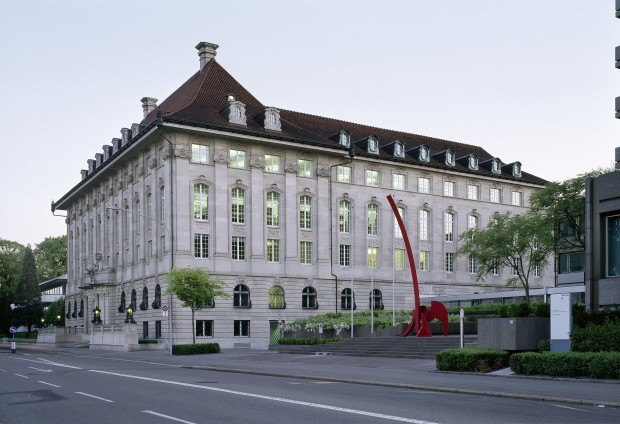Swiss Re AG, the world’s second-biggest reinsurer, sold its holdings of euro-denominated covered bonds as the European Central Bank gobbles up the highly-rated debt.
The company is the latest investor to back out of the market as ECB purchases stoke prices and push yields into negative territory. Others retreating include Union Investment Institutional GmbH and MEAG Munich Ergo Asset Management GmbH.
“European covered bonds are now part of the ECB’s quantitative easing package, leading to a rally after which we believe the asset class is no longer attractive anymore,” Chief Investment Officer Guido Fuerer, who oversees about $127.6 billion of investments, said in an interview. “So we sold our sizeable portfolio of euro-denominated covered bonds.”
He declined to provide further details on the amount sold. Returns from selling fixed-income securities helped Swiss Re report an unexpected increase in profit in the first quarter. It booked net realized gains of $380 million from the sale of investments after $234 million a year earlier.
The ECB began buying covered bonds and other debt in October to jump-start the economy, its third such purchase program since the financial crisis. At the start of May, it had spent 75.1 billion euros ($85 billion) of the bonds, which are backed by pools of loans such as mortgages, according to its website. That includes about 24 billion euros bought during the first two months after it expanded the program to include government debt.
With demand outstripping supply, the ECB’s accumulation of the assets has driven down yields, which move in the opposite directions to prices. The result is that a growing share of the covered bond market is trading at negative yields, meaning investors pay to hold the debt.
Relative Safety
Negative-yielding covered notes account for 8 percent of the 745.6 billion-euro iBoxx Euro Covered Index, a benchmark used by investors, said Stephan Dorner, covered bond analyst at Credit Agricole SA in London. Investors are willing to hold the notes because of their relative safety and because they still offer higher rates than top-rated government securities and the ECB’s deposit rate.
“Central banks are the market-makers at the moment both on the size of their interventions as well as through forward guidance,” said Fuerer, who oversees $127.6 billion of investments. “This can lead to asset bubbles as investor allocation is no longer based on fundamentals but on central bank liquidity.”
Hunting Yield
Fuerer questioned the price of some European government bonds, the main target of the ECB’s asset purchase program. Equity markets also have reached “rich valuation,” while U.S. leveraged loans have over-rallied, he said.
“Our goal is clearly not to realize gains for the sake of it,” Fuerer said. “We will not take additional risks to hunt yield for the sake of it and exposing us then potentially to the end of a liquidity-induced rally.”
Zurich Insurance Group AG Chief Investment Officer Cecilia Reyes said in an interview last month that the company will buy a “very small” amount of junk bonds, in response to yields on investment-grade debt being pushed into negative territory by the ECB’s quantitative easing program.
Reinsurers and insurers, conservative investors by constitution, buy bonds and other fixed-income instruments to offset their liabilities. At the end of the first quarter, 40 percent of Swiss Re’s investments were in government bonds, 26 percent in corporate debt and 15 percent in cash and short-term investments.
Of Swiss Re’s $38.5 billion credit portfolio including securitized credit, 94 percent were investment grade. No major changes are planned to that as “there is still enough supply making a good environment for high quality credit,” Fuerer said.





















 Surge of Supercharged Hurricanes Prompt Call for Cat 6 Classification
Surge of Supercharged Hurricanes Prompt Call for Cat 6 Classification  California Workers Comp Combined Ratio for 2024 Highest in 20-Plus Years
California Workers Comp Combined Ratio for 2024 Highest in 20-Plus Years  Five AI Trends Reshaping Insurance in 2026
Five AI Trends Reshaping Insurance in 2026  Why ‘Good Enough’ Is Killing Insurance: The Hidden Cost of Satisficing
Why ‘Good Enough’ Is Killing Insurance: The Hidden Cost of Satisficing 



